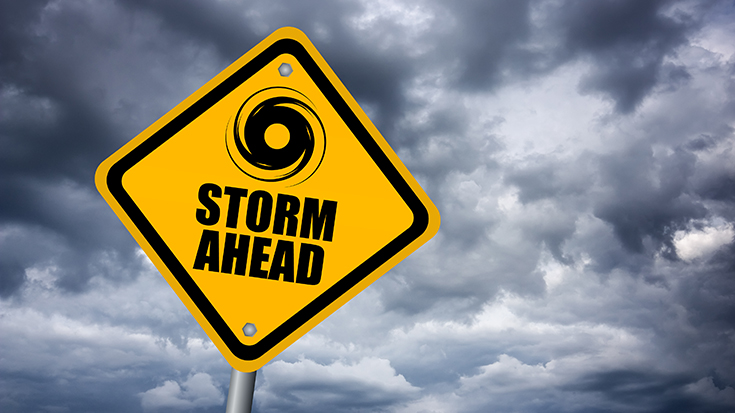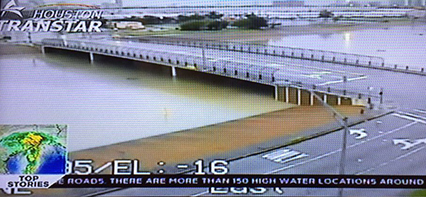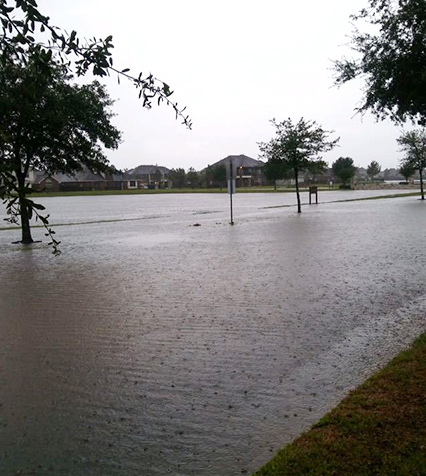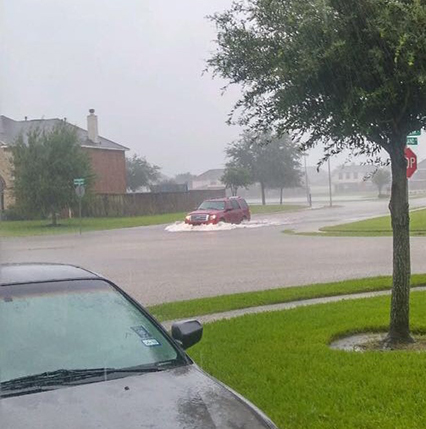
According to weather.com, by mid-October, 15 named storms, 10 hurricanes, and six hurricanes ranked at Category 3 or stronger formed during the 2017 Atlantic hurricane season, making this year the seventh most active hurricane season on record.
From Harvey, to Irma, to Maria, Americans have been in the crosshairs, and those working in hospitals in the affected areas made certain their patients would be cared for no matter what.
That’s where AARC member Wadie Williams, Jr, MS, RRT, CerAT, MEMS(S), found himself when Harvey barreled into Southeast Texas at the end of August.
Getting ready

“Our department plan called for me to ensure we moved supplies in early — we took two deliveries prior to the storm — as well as bring on additional medical gas stores,” said Williams, manager of respiratory care and dermatology therapeutics at Houston Methodist Hospital, Texas Medical Center.
“We then prepositioned supplies and cylinders in each of our campus patient care buildings to make it easier for the staff to locate supplies or cylinders in the event there was a catastrophe of some sort.”
As a member of the hospital’s Rideout Team, Williams was on hand throughout the worst of the storm and the flooding rain that followed it, and he focused on making sure his staff was up to the job.
“We had ample staff — many were stuck there since the storm moved toward Houston a little quicker than expected — though we had to cover larger than desired areas sometimes,” says Williams.
That earlier than expected arrival also meant many of the RTs who ended up staffing the storm were not on the Rideout Team but simply there because Rideout Team members couldn’t get into the facility.
In fact, nearly half the RT staff had never worked a hurricane or other major disaster before.
“My biggest responsibility was to keep our staff focused on taking great care of our patients and to be prepared to act quickly if things got worse,” Williams said.
Hospital spared major damage
Even though the primary roads leading into the medical center were flooded, the hospital was spared any significant damage.
“There was water intrusion via the garage stairwells that are adjacent to the hospital and it fed into the hospital structure, but it was very minor,” Williams said. “We didn’t lose power or critical infrastructure that would have made a stressful situation worse.”
He’s proud of his staff for rising to the occasion and remaining committed to their patients, all while many of them had their own personal concerns for their homes and families.
Williams was among them.


“I spent the morning of the day I left boarding up windows, making sure there was plenty of gas for the generator, ensuring there was sufficient food and water available for people and pets, and checking with my neighbors, who watched out for my family and home while I was away.”
As he led the RT team at the hospital, his family kept him posted on things at home with text messages and photos. Despite the fact that his neighborhood includes three lakes that spilled over their banks, he didn’t experience any flooding inside his house.
His youngest brother, who lives nearby, wasn’t so lucky.
“My brother, on the other hand, lost everything — his home and belongings, as well as two cars,” Williams said. “Fortunately, they were insured and are working through that process.”
After the storm
As a member of the Texas National Guard, Williams has deployed on numerous missions to help people dealing with a natural disaster. Normally the Guard doesn’t call members in the affected area to duty, but Harvey was different — everyone was asked to serve.
Unfortunately, Williams couldn’t answer the call for this storm.
“By that time, I couldn’t deploy, mostly because I was already flooded in and working at the hospital and had no clear way of traveling from point to point — including to my home for my gear and uniforms,” Williams said.
But the recovery is ongoing in Texas and he believes there will still be an opportunity for him to serve.
“There are several operations still in place and I’m hoping to deploy and serve the many folks of Southeast Texas who are still displaced and in need of support.”
Moving forward
Williams is focusing on a few of the lessons his department learned from their Harvey experience and trying to help staff deal with the losses they have faced — including letting everyone know about the AARC Disaster Relief Fund.
“We had several members of our department who had varying degrees of damage, but at least three had major damage that I am aware of,” Williams said. “I feel good about the AARC’s efforts to help RTs at times of great stress and disasters such as Harvey, Irma, and other storms and disasters.”
He believes it shows how the AARC invests “in those that invest in them and try to help them get back on their feet and on the road to recovery and rebuilding their lives.”
In the past year, the AARC has activated the Disaster Relief Fund for members living in federally-declared disaster areas in Georgia, Louisiana, Oklahoma, Texas, Florida, South Carolina, North Carolina, and California. The Fund remains open for six months from the time of activation.